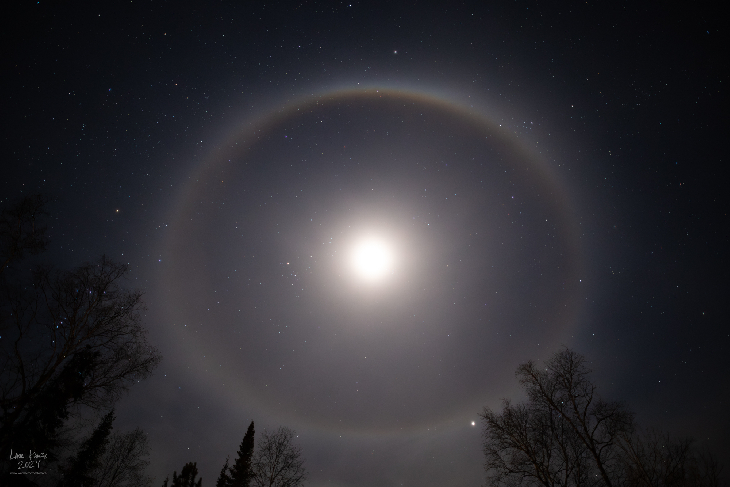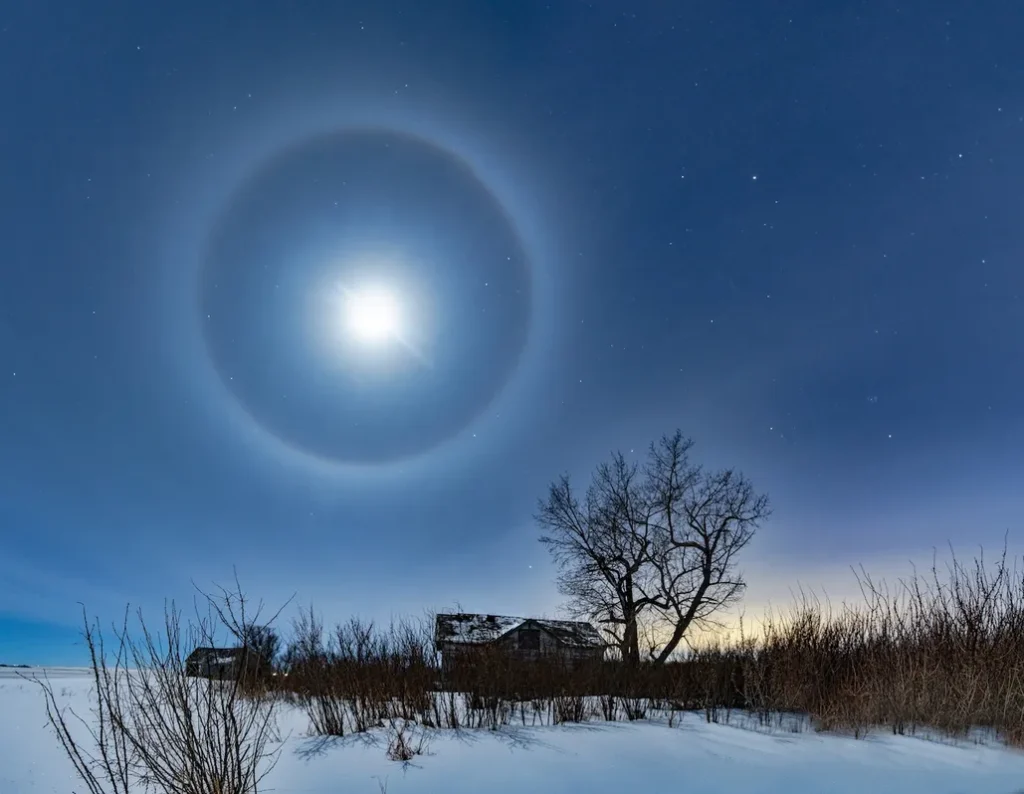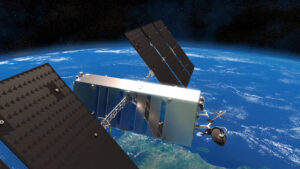A Rare Moon Halo Was Seen Over Canada: What Causes Moon Halos?
19th Feb 2024
On Friday, 16th February, a rare circumscribed Moon halo was captured by a Canadian amateur photographer and astronomer, Lauri Cangas, from Amethyst Bay, Ontario.
“I looked out the window tonight and saw a reflection of a lunar halo in my car windshield. I stepped outside expecting to see a typical 22-degree lunar halo and had a wow moment as the halo was not round at all!” – the photographer wrote.
Halo – the Moon’s “rainbow”
Most of us have witnessed a rainbow at least once in our lives – a stunning display of colored light resulting from sunlight refracting in water droplets. This natural spectacle is often linked to spring or summer rains and is rarely observed during the colder seasons.
However, another atmospheric phenomenon with similar characteristics exists, known as a “halo,” which is frequently visible in winter. Unlike the rainbow, the halo is associated not only with the Sun but also with the Moon.
A “classic” circular Moon halo – what is it?
The primary distinction between a rainbow and a halo lies in the processes contributing to their formation. Rainbows result from liquid water droplets, while halos are caused by ice crystals, typically taking the form of hexagonal prisms. When a light ray encounters one of the prism faces, it undergoes refraction, traverses the prism, undergoes refraction again, and exits, deviating from its original path by 22°.

Since rays reaching us from the Sun or the Moon are essentially parallel and airborne ice crystals exhibit random orientations, each crystal generates an additional “ray” deviated by 22° from the light source’s direction. The cumulative effect of these rays from numerous chaotically oriented ice crystals appears to an observer as a circular formation, with our daylight or moonlight at its center.
How and when can you see a circular Moon halo?
Observing a halo around the Moon requires the Moon to be present in the sky in a sufficiently large phase. Fortunately, this occurrence is not particularly rare. Meteorological records indicate that a halo is visible approximately twice a week at any given location: once during solar halos and the second during lunar halos. Therefore, labelling this phenomenon as “rare” would be inaccurate, as it is a relatively common event in the celestial landscape.
However, there is a more rare phenomenon – a circumscribed Moon halo – and this is what Lauri Kangas saw and photographed.
Why is a circumscribed Moon halo that rare?
The circumscribed halo is a less frequently observed phenomenon compared to the more common 22º circular halo. This optical display occurs when moonlight undergoes refraction by elongated, pencil-shaped ice crystals present in high cirrus clouds. These miniature frozen “pencils” gradually descend from the clouds, and aerodynamic friction causes them to align parallel to the ground.
“It was the most elliptically-shaped circumscribed halo I have ever seen”, – said Kangas, and no wonder: the circumscribed halo becomes visible when this alignment approaches near perfection. Due to these specific conditions required for its occurrence, witnessing a circumscribed halo is considered a rare and exceptional sight!
![Beauty of the Pink Moon And Lyrid Meteor Shower in This Week’s Best Astrophotos [19-26 April] Beauty of the Pink Moon And Lyrid Meteor Shower in This Week’s Best Astrophotos [19-26 April]](https://orbitaltoday.com/wp-content/uploads/2024/04/Pink-Moon-is-on-its-way-above-the-mountains-1-300x300.jpg)





Thank you for your comment! It will be visible on the site after moderation.